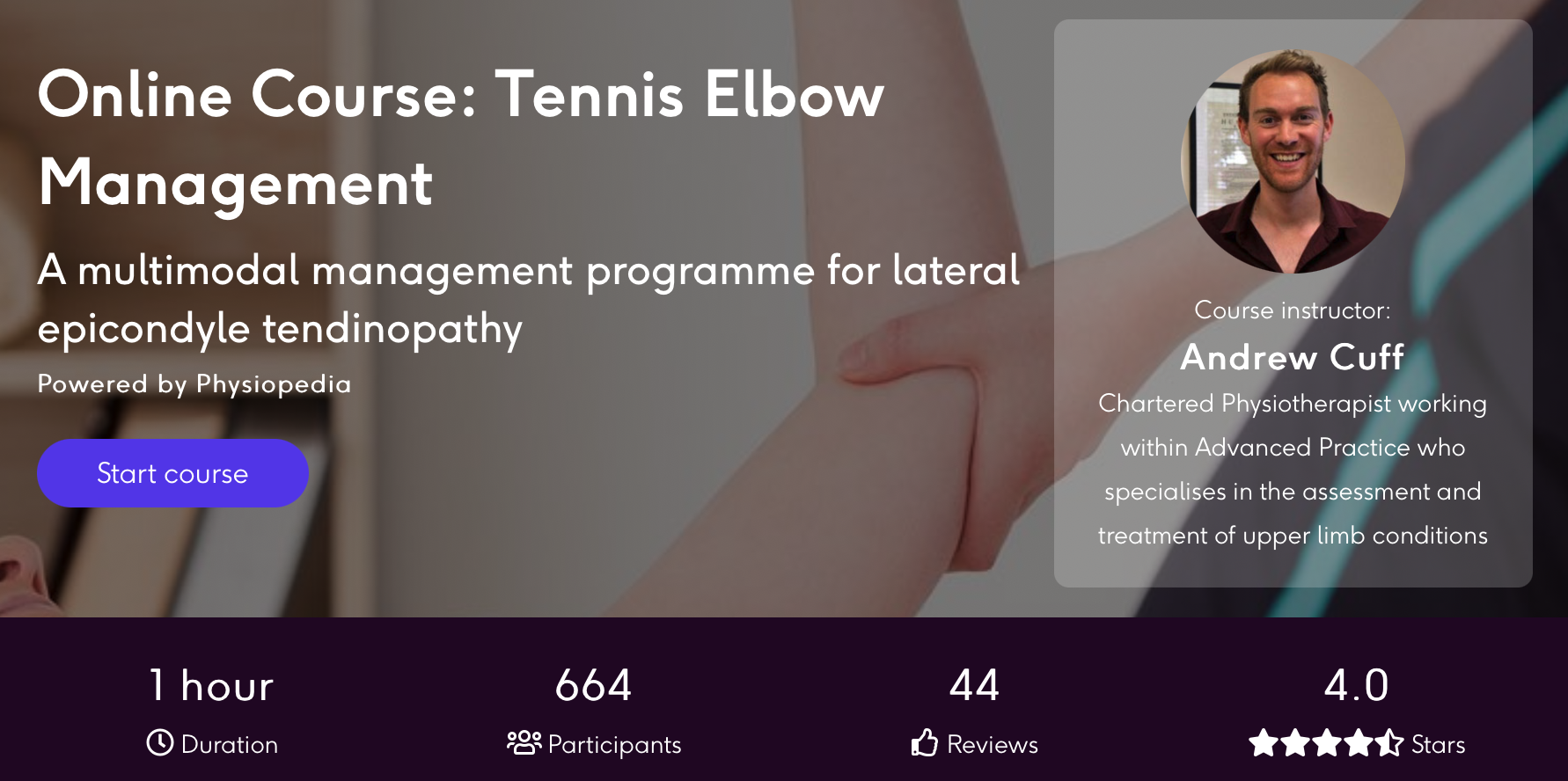There is growing controversy surrounding some new treatments for tennis elbow but what does the evidence tell us?
Around 3% of the population will suffer from tennis elbow at some point in their life but despite this high number the optimal treatment remains controversial. Evidence remains inconclusive about which treatment is best however it is widely accepted that non-operative treatment is the best first-line option.
Tennis Elbow Treatment with Andrew Cuff
Non-operative treatment includes physiotherapy, corticosteroid injections, platelet-rich plasma and autologous blood but there is a lack of evidence evaluating the superiority of one over the other. Recent evidence is inconsistent and often contradicts findings from other studies clouding clinical decision making.
To try and shed some clarity on the situation a recent systematic review with meta-analysis was published in JES International with the aim of comparing the functional and pain outcomes of physiotherapy, corticosteroid injections, Platelet-rich plama and autologous blood with no active treatment or placebo control.
Methods
The protocol of this systematic review with meta-analysis was pre-published on PROSPERO and adhered to the PRISMA-P guidance. The authors developed their search strategy through an interactive process with input from experts. They chose to use three different unique searches for the three treatments the review was focussed on physiotherapy treatment, CSI and PRP/AB.
Seven databases were for the search which took place in March 2021 using a combination of keywords including lateral epicondylitis and randomised controlled trial and physiotherapy. The search was restricted to non-human studies published in English language only with no date restriction on publication.The full search strategies is available as a word document.
To be eligible for inclusion articles had be meet the following criteria:
- use a randomised controlled trial approach using a comparison of no active treatment or placebo
- involve patients who were between 18 and 75 years of age with proven lateral epicondylitis
- be followed up for a minimum of six months and used pain and functional outcomes as the outcome measures
- If physiotherapy treatment was used this must be defined as strengthening and stretching with manual therapy or electrotherapy being excluded
- Corticosteroid injections, platelet-rich plasma and autologous blood injections had to adhere to protocols outlined in the article which is available in full
Article screening was performed by by two reviewers in a two-stage approach working independently of each other. Disagreements were resolved by consensus and data extraction was performed using Microsoft Excel with statistical analysis performed using RevMan. Risk of bias was assessed using the Cochrane Risk of Bias Tool for RCTs with GRADE using to evaluate quality of included studies.
Results
In total seventeen trials were included within this review with sample sizes ranging from 18 to 132 with mean age of participants being 48 with a range of 43-62. The most common follow up duration was 12 months.
Five studies (n= 447) compared physiotherapy treatment which involved strengthening to a control which demonstrated no different in pain (0.07, 95% confidence interval [CI]: 0.56 to 0.41) or function (0.08, 95% CI: 0.46 to 0.30) at 12 months. A subgroup analysis showed similar results for stretching treatments although this was more effective than strengthening but still below significance.
The studies related to physiotherapy interventions were assessed to have serious risk of bias with low-moderate certainty of evidence. It’s unclear which treatment protocols were used in all of the studies with possible lack of consistency in adherence to treatments. It is also possible that single treatment approaches to treating tennis elbow is ineffective and combined approach is effective.
Seven studies investigated the use of corticosteroid injection which totalled 416 patients with a mean age of 50 years. For both pain (mean difference: 0.70, 95% CI: 0.22 to 1.18) and function SMD: 0.35, 95% CI: 0.54 to 0.16) the control group was found to be more effective at 12 months. Included studies has high risk of bias and a low-moderate certainty of evidence.
Two studies compared platelet-rich plasma with controls (n= 64) with no difference was observed in pain or function. This was the same for the three studies comparing autologous blood (n= 134). Both groups of studies has low risk of bias and high certainty of evidence.
Summary
The findings of this systematic review are consistent with recent similar reviews by Kim et al with the only major difference being Kim et al had a broader range of physiotherapy treatments included within their review and showed a significant improvement in pain outcomes over a similar timeframe. It is also possible that a multimodal approach to treatment is the most effective to managing tennis elbow which would not have been demonstrated in this systematic review.
A recent review by Houck et al showed that both PRP and AB are effective treatments for tennis elbow in the first 12 weeks of treatment only which is supported by this review as both were ineffective at 6 and 12 months.
